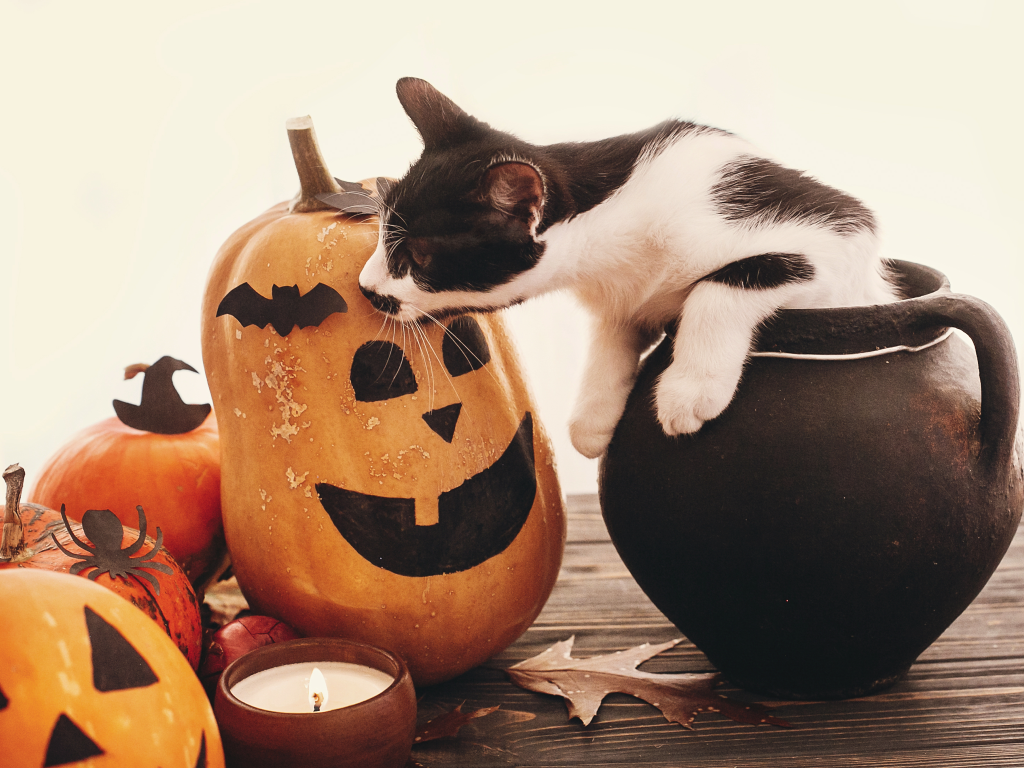Haunted Hounds & Happy Homes: Helping Clients (and Ourselves) Navigate Halloween

October is officially here! The air is crisp, the leaves are brilliant, and the entire clinic seems to be running on caffeine and candy corn. As veterinarians, we know that while Halloween is a night of fun for families, it can also be one of the most unpredictable - and busiest - nights of the year.
As a practice owner (and a mom myself), I’m always looking for ways to combine clinical excellence with real-world practicality. This time of year, that means helping our teams and clients prepare for the spooky chaos ahead so we can prevent emergencies before they start.
Here’s how you can help your clients (and your own pets) have a safe, stress-free, and spook-tacular Halloween.
The critical candy conversation: prevention starts at the counter
Every October, we see the same spike in chocolate toxicity, xylitol ingestion, and GI upset from “just one piece” of candy. Prevention starts with communication.
Make it part of every pre-Halloween visit or discharge conversation. A quick reminder like, “Keep the candy well out of reach - we see more chocolate toxicity calls this week than any other time of year,” can save a frantic phone call later.
Clinic tip: Print or email a one-page “Halloween Hazards” handout for clients, and include your local emergency numbers and poison control hotlines.
ASPCA Animal Poison Control Center: (888) 426-4435
Pet Poison Helpline: (855) 764-7661
Costumes and chaos: the behavior talk
Costumes are adorable—until they’re not. Talk to your clients about proper-fitting and safe costumes using these tips:
- Prioritize Mobility and Vision: A pet’s costume must allow them to breathe, see, and move naturally. Anything that covers the eyes, restricts leg movement, or blocks the mouth (preventing panting and heat regulation) is a hard pass.
- Avoid Small, Dangling Parts: Capes, strings, buttons, or plastic accessories can easily become choking hazards or foreign bodies if chewed off. Inspect the costume for anything that could be swallowed.
- The Comfort Test: If your pet looks miserable, stressed, or is trying desperately to shake the costume off, take it off. No photo op is worth the stress. For reluctant pets, stick to a festive bandana or an orange collar.
- For Kids’ Costumes: If your children’s costumes are long, flowing, or have large battery packs, ensure they won’t be stepped on by pets or pose a fire hazard near flickering candles or jack-o’-lanterns. Also, be mindful of masks or props that make you look like a monster or villain—avoid scaring your pets with sudden, masked appearances!
For pets with known anxiety, start conversations early about situational medication or calming supplements. You might say, “If doorbells or costumes make your pet anxious, let’s plan ahead this year so everyone can enjoy the night.”
In the clinic, consider setting up a small “Trick-or-Treat Safety” board with visuals of safe costumes and tips for managing anxiety. It’s a simple, friendly way to spark client conversations and reinforce preventive care.
Doorbells, escapes, and microchips: managing the madness
Halloween night is prime time for escaped pets. Share reminders on your social media or discharge instructions to help prevent it:
- Keep pets secured before trick-or-treaters arrive.
- Double-check collars and microchip information.
- Use background noise like a TV or soft music to mask the excitement outside.
Offering a quick microchip scan or registration check during the week leading up to Halloween is another easy way to add value and keep clients engaged.
Supporting your own team
For those of us balancing the exam room and the candy bucket, the best advice is simple: be present, not perfect.
Remind your team (and yourself) that it’s okay to keep it low-key. Bring in themed snacks, trade scary stories at the end of the day, or have a quick “best Halloween pet moment” round before closing. Those little moments of connection remind everyone why we love this work and keep the spooky season fun instead of frantic.
Halloween doesn’t have to mean late-night emergencies or chaos in the clinic. With a little planning, early communication, and a calm approach, we can help families enjoy the fun while keeping their pets safe at home where they belong.
Plan ahead, educate often, and keep the scares where they belong—in the costumes, not the clinic.
Happy haunting, and may your Halloween be safe, joyful, and candy-free!
